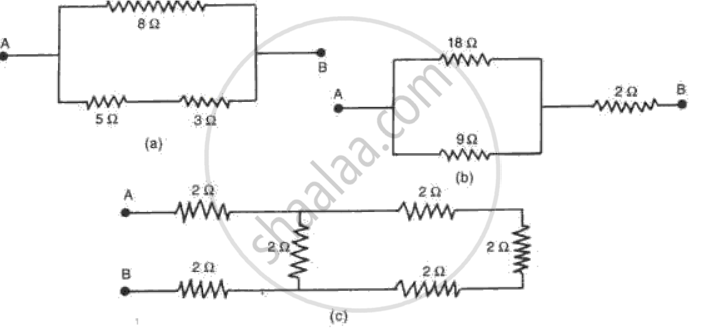Advertisements
Advertisements
प्रश्न
Keeping the potential difference constant, the resistance of a circuit is halved. By how much does the current change?
उत्तर
From Ohm's law we have:
V/I = R
Or I = V/R
Now, according to the question, the resistance of the circuit is halved and the potential difference is constant.
i.e. R' = R/2
and V' = V
Then the new current is given by:
I' = V'/R'
= V/R/2
= 2V/R
= 2I
It is clear from the above statement that the current becomes double.
APPEARS IN
संबंधित प्रश्न
Which device is used to measure p.d?
Potential difference is measured in _________ by using a ___________ placed in ___________ across a component.
If a potential difference of 10 V causes a current of 2 A to flow for 1 minute, how much energy is transferred?
The values of potential difference V applies across a resistor and the corresponding values of current I flowing in the resistor are given below:
| Potential differences, V (in volts) | : | 2.5 | 5.0 | 10.0 | 15.0 | 20.0 | 25.0 |
| Current, I (in amperes) | : | 0.1 | 0.2 | 0.4 | 0.6 | 0.8 | 1.0 |
The differences between the electrostatic potential of the positive end the negative end of an electric cell is the ______ of the cell.
What is the combined resistance of each of the networks between A and B shown in fig. ?

Find the resistance of a conductor if the electric current flowing through it is 0.35 A when the potential difference across it is 1.4 V.
State Ohm’s law.
Which of the following represents voltage?
Inside a hollow charged spherical conductor, the potential ______
